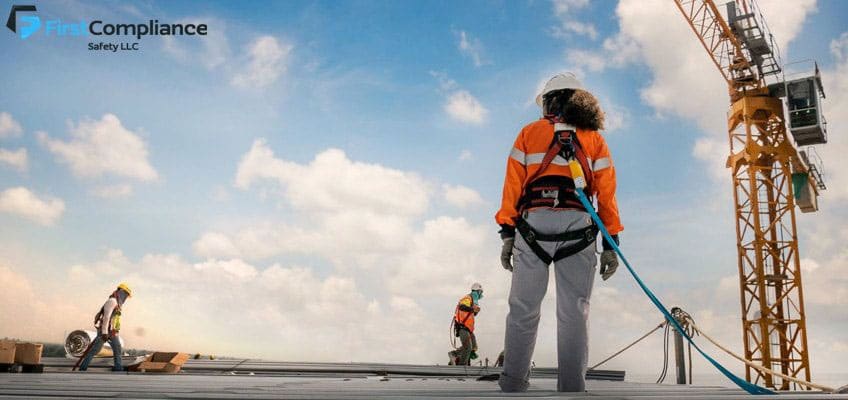
Looking for a PDF downloadable version for you to print off for your employees? We've got printable versions here for all of our Toolbox talks if you sign up for our newsletter!
Date: ____________________________________
Supervisor: ____________________________________
Company Name: ____________________________________
Job Name: ____________________________________
Communication is critical on a construction site. Everyday, we work with heavy machinery and dangerous materials. Without thorough communication between coworkers, these machines and materials can cause damage to property, injuries, and death. When we work with heavy machinery and vehicles (such as forklifts and cranes), this communication occurs in the form of hand signals. In today’s Toolbox Talk, we will discuss the importance of proper signaling, and how to use your hands to communicate with drivers/operators.
Guidelines for Discussion:
While working on a construction site, we rely on communication to complete tasks. Sometimes, this communication occurs in the form of hand signals. We use hand signals when verbal communication isn’t efficient or possible, like between a worker on the ground and a crane operator. It is crucial that we establish a mutual understanding of the different signals so that we can actually rely on our non-verbal communication as a consistent resource in the completion of tasks.
A shared understanding of hand signals is key to the overall safety of the construction site. Think about it. If you are certain that you are signaling for a truck driver to move forward but he understands this to be the symbol for backing up, then this can result in damaged equipment, an injured coworker, or even death.
Here are some general rules to follow when using hand signals:
Here are some general hand signals to remember:

Remember, while there are general rules of hand signaling, there are also differentiations based on the type of signaling operation. Depending on the rules of your company, there may be slightly different rules when you are signaling to a truck, forklift, crane, etc.
Additional Discussion Notes:
At the end of this Toolbox Talk, go over the specific rules of signaling that apply to your company and/or routine tasks. If necessary, assign a signal person or persons for various tasks.
Attendees:
____________________________________
____________________________________
____________________________________
____________________________________
____________________________________
____________________________________
____________________________________
____________________________________
____________________________________
____________________________________
____________________________________
____________________________________
____________________________________
____________________________________
____________________________________
____________________________________
____________________________________
____________________________________
____________________________________
____________________________________
____________________________________
____________________________________
Disclaimer
The information contained within this document (both the online and downloadable version) is provided for informational purposes only. Nobody shall take this as a comprehensive or exhaustive resource on this topic. This material is believed to be accurate, however, the information has been compiled from multiple sources, and so First Compliance Safety assumes no responsibility for the accuracy of this information. We encourage you to consult experts about this specific Toolbox Talk to ensure you are compliant with any and all safety regulations and processes. In no event does the content of this document supersede any applicable local, state, or federal statutes or regulations.
Contact US
"*" indicates required fields
First Compliance Safety LLC is an independently-owned company. First Compliance Safety LLC is in no way endorsed, sponsored, approved by, or otherwise affiliated with Avetta®, NCMS®, ComplyWorks®, ISNetworld®, PICS®, CanQual®, Cognibox® & Veriforce®.
*ISN®, ISNetworld®, RAVS®, T-RAVS™ and MSQ™ are trademarks or registered trademarks of ISN Software Corporation.
First Compliance Safety LLC is an independently-owned company. First Compliance Safety LLC is in no way endorsed, sponsored, approved by, or otherwise affiliated with Avetta®, NCMS®, ComplyWorks®, ISNetworld®, PICS®, CanQual®, Cognibox® & Veriforce®.
*ISN®, ISNetworld®, RAVS®, T-RAVS™ and MSQ™ are trademarks or registered trademarks of ISN Software Corporation.
© Copyright 2024 First Compliance Safety LLC All Right Reserved